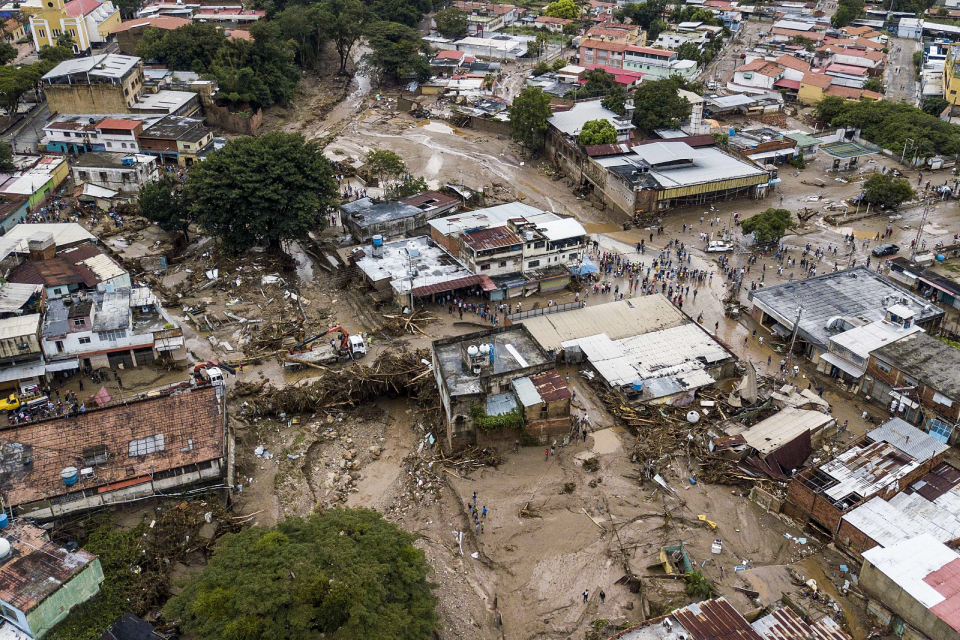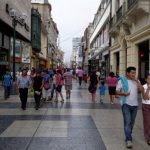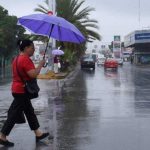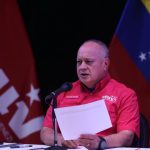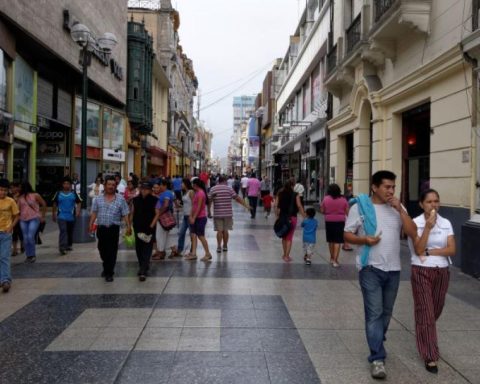The Institute of Tropical Medicine of the UCV estimates that there is an increase in patients with mycosis close to 2933.33% between 2017 and 2022. It was detected that a group of volunteers from the Rotary Club Caracas were infected with histoplasmosis, an infection in the lungs that It is caused by a fungus that sleeps in the ground. They warn that there is a national underreporting of pulmonary mycoses in victims and humanitarian support personnel in areas where there were torrential avalanches
Text: Joshua De Freitas
On December 5, 2022, the Institute of Tropical Medicine of the Central University of Venezuela (IMT – UCV) detected 20 cases of histoplasmosis, a lung infection caused by a fungus, in a group of rescuers who attended the torrential avalanche in Las Tejerías , in the state of Aragua, last October.
The cases are referred to a group of volunteers from the Rotary NGO who live in the Capital District and provided their services in Las Tejerías between October 14 and 16.
Histoplasmosis is an infectious disease caused by inhaling spores of a fungus called Histoplasma capsulatum. The distribution of the fungal pathogen is found throughout Venezuela in the form of mold on the ground and in the droppings of bats and poultry or birds that live in caves, such as the Guácharo (Steatornis caripensis).
“We were able to detect the outbreak based on the epidemiological history of histoplasmosis: people are inhaling the air in the disaster area without much protection. The spores are disseminated by the movement of earth and enter the respiratory system”, explained Dr. Freddy Salazar, member of the medical mycology section of the IMT – UCV and professor of microbiology at the UCV.
“The first patient in that group presented high fever and difficulty breathing on the third day of visiting the disaster area,” Salazar added. «He did not have a clinical improvement by then. Other infectious causes related to landslides and water movements such as salmonellosis (or salmonella) were ruled out. It was not until he was given antifungal drugs that the febrile picture present for more than 7 days that did not respond to antibiotics could be lowered.
*Read also: Maduro aspires to alleviate the loss of 378 houses in Las Tejerías with the Housing Mission
Aftermath of a landslide in Las Tejerías
Doctors from the institute’s medical mycology laboratory warn that there is an outbreak of histoplasmosis that, so far, has been underreported in victims, rescuers and anyone who was in the disaster area.
“There is a direct correlation between acute histoplasmosis infection and socio-environmental disasters such as the torrential avalanche that occurred in Las Tejerías 3 months ago,” explained Dr. Sofía Mata, director of the IMT-UCV medical mycology laboratory.
Dr. Mata warned that people who were present or live near where the 2022 torrential avalanches occurred in the states of Aragua, Anzoátegui and the Capital District are at the highest risk of contracting the disease.
«The movement of the earth spreads and volatilizes the spores of the fungus in the air, people inhale it and become infected. In the past we have seen a discreet increase of 158 cases of patients with histoplasmosis who came from the Vargas disaster in 1999. There is no doubt that, with these confirmed cases among rescuers, there are other people with histoplasmosis who have not been treated,” he said. .
According to the World Health Organization (WHO) and the Centers for Disease Control and Prevention (CDC), histoplasmosis is not spread from person to person. The infection of the fungus occurs when the patient inhales the air with spores of Histoplasma capsulatum that were already present in the environment.
Histoplasmosis may be hidden, the patient may be asymptomatic. The WHO classifies immunosuppressed people —patients with HIV-AIDS, cancer patients, who had a prolonged Covid picture or similar— as the populations with the highest risk of contracting the disease.
“The fungus that causes the disease is present throughout America, but this pathology is not detected much because it requires several tests to rule out other infections, there are few specialists and the treatment is long,” he added.
*Read also: podcasts | Three in one: Las Tejerías, its economy and tragedies that could have been avoided
Histoplasmosis: a neglected disease
For Dr. Rommie Merino, a dentist specializing in medical mycology and member of the IMT – UCV, histoplasmosis is one of the most common fungal diseases in Venezuela, as well as one with the greatest underreporting nationwide.
«Since 2015, all fungal diseases, especially histoplasmosis, are considered neglected diseases by international organizations. It is a difficult disease to treat, from the fact that the patient does not suspect that he is infected to the cost of treatment, “said Merino.
Histoplasmosis can be present in a patient and not present symptoms for years. The IMT-UCV specialist specifies that a person can be infected with histoplasmosis, but the fungus remains “encapsulated” in the respiratory system as a defense mechanism of the patient’s immune system, which can complicate early detection and timely treatment of the infection. disease.
«In Venezuela you can see cases of fungal infections in people who go on cave expeditions. Histoplasmosis is more common than it seems, the first case in the country was diagnosed in the 1960s, and outbreaks are still present. But the epidemiological underreporting is considerable, both nationally and globally,” said the dentist and medical specialist.
One of the reasons for underreporting is the small number of professionals and specialized centers in the country. According to doctors Salazar and Merino, universities are the main centers for research and detection of mycoses in Venezuela. It is estimated that there are fewer than 25 mycologists nationwide.
In the central region of the country, the closest medical mycology centers to detect the disease are the Institute of Tropical Medicine of the UCV, the National Institute of Hygiene and the Hospital Vargas de Caracas. All these centers are 72 kilometers away from Las Tejerías.
The Institute of Tropical Medicine of the UCV established in a preliminary way that there is an increase in patients with fungal infections: from 12 cases in all of 2017 to 364 cases of different mycoses from January to December 12, 2022. This is equivalent to an increase close to 2933.33% of patients with fungal infections in the last 6 years, where 2021 and 2022 maintain the highest partial records (with 186 and 364 cases respectively).
«Unlike other diseases classified as neglected, such as dengue or tuberculosis, histoplasmosis and fungal diseases are not mandatory registration in epidemiological bulletins. The specialists in Venezuela have no way of accessing the data beyond contacting each other and comparing the information,” said Merino.
*Read also: Hospital Survey reports that the average number of operating wards is 3.5%
Silent mycoses between emergencies
Primavera Alvarado, doctor specializing in medical mycology and coordinator of the Mycology Laboratory of the Institute of Biomedicine “Dr. Jacinto Convit” from the UCV and the biomedicine laboratory of the Hospital Vargas de Caracas, specified that the medical history of the Rotary rescuers who went to Las Tejerías showed that the people present in the disaster area did not have sufficient prevention at the level of public health.
«Fungi are in the environment, but these outbreaks come out with greater force when there are emergencies: when there is an endemic or pandemic, when there is a higher immunosuppressed population, or when there is a socio-environmental disaster, such as landslides that remove the earth with the fungus,” Alvarado explained. “At Hospital Vargas we have a close to 33% increase in histoplasmosis patients with covid-19. We also saw that with the AIDS pandemic in the 1980s.”
For specialists, the main symptoms of acute histoplasmosis can go unnoticed by both the patient and the non-specialist doctor: high fever for more than 5 days, asthma attacks or shortness of breath (similar to asthmatic attacks when there is no history of with asthma), chest pain, fatigue, chills, dry or non-productive cough, among others. Also the patient can be infected and not give any symptoms.
“This scenario makes it difficult to detect mycoses early, because the symptoms can indicate any other lung infection until the serology or bioanalysis analysis of the patient’s sputum is done,” Alvarado warned.
“In the case of the 20 Rotary rescuers and 19 other firefighters, who we are currently analyzing, they admitted that they went to the disaster area without masks, or with surgical masks in the best of cases, which indicates a lack of protection. . In those cases, people should wear at least an N95-type mask,” he said.
The coordinator of the Laboratory of the Hospital Vargas de Caracas said that there is a very high underreporting of fungal diseases in the interior of the country due to the complex humanitarian emergency that Venezuela is going through and the loss of specialists in medical mycology to detect and analyze the epidemiological panorama of the fungal infections.
“And that’s just the tip of the iceberg. The treatment of histoplasmosis is long, with a minimum of 6 months of drugs, drugs that patients sometimes cannot afford due to their low income and the high cost of assets,” she added.
The 20 rescuers were diagnosed in the acute phase of the disease, when there are greater treatment facilities. Like most infections, if histoplasmosis is not detected and treated in time, mortality increases in highly vulnerable patients, such as people over 55 years of age and immunosuppressed people. The members of the IMT – UCV recommend that all people who were involved in the Las Tejerías, El Castaño, Valle Verde (Puerto La Cruz) or other earth movement disasters be examined at a specialized center.
*Read also: PAHO strengthens infection prevention and control at San Cristóbal central hospital
WHO: 19 highly infected fungi
Despite the underreporting, Venezuela is not the only country with an increase in patients with fungal infections. The WHO established that there is a global trend in the increase in cases of different fungal pathogens due to the resistance of fungi to current antifungal drugs, the increase in treatments that suppress the immune system and climate change.
The WHO published in October 2022 a list of 19 most worrying infectious fungal pathogens for global public health. Each year, these pathogens cause approximately 1.5 million deaths worldwide, as many as tuberculosis and more than malaria. All these species of fungi are found in Venezuela.
«In the country there are 3 well-marked deep mycoses: histoplasmosis, paracoccidioides and coccidioidomycosis. These deep mycoses are on the WHO list. Histoplasmosis is in the high priority category and Venezuela is highly exposed and vulnerable to it. The other two are in the medium priority category. Coccidioidomycosis has a higher incidence in the Lara – Falcón – Yaracuy region,” explained Alvarado.
In a videoconference of the NGO SOSTelemedicina and the Venezuelan Society of Infectious Diseases, doctors Luis Echezuría and Mariano Fernández warned that the complex humanitarian emergency, and the degradation of the health system as a result of this context, makes Venezuela a more vulnerable country in the face of socio-environmental disasters. and climate change in terms of timely medical care and protection protocols.
“Although we should not be extremely alarmist, we must be aware that not all respiratory infections in disaster scenarios, and in general, are tuberculosis. Awareness of these pathogens must be raised to better prevent future outbreaks. In Caracas, at least, we continue to diagnose. The more detections and information there is, the better we can adapt to future outbreaks,” said Dr. Alvarado.
Post Views: 137
